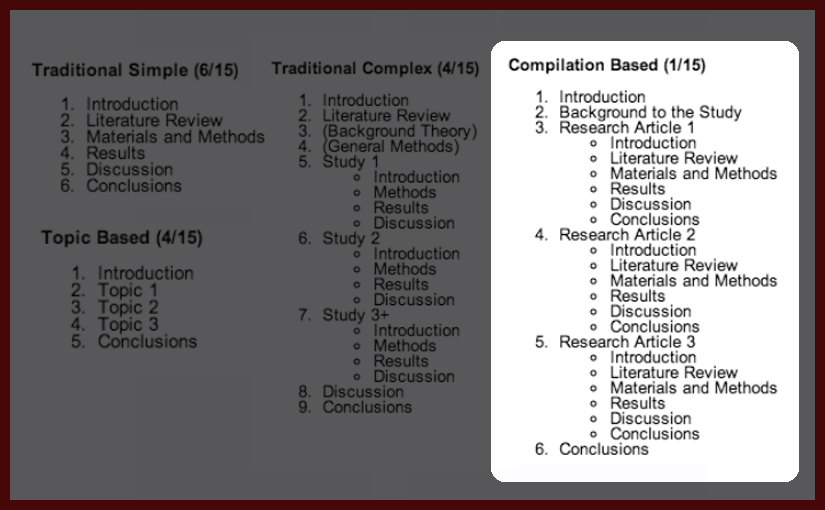It’s best practice for all PhD researchers to publish in peer-reviewed journals throughout their research period. There are many reasons why, as I explain in another post. In an earlier post I pointed out that you should make it a priority as soon as you start your PhD to identify key journals and conferences in your field.
The compilation thesis, also referred to as the multiple-manuscript thesis or anthology, is most commonly submitted by researchers in science and engineering disciplines. To produce a compilation-based PhD thesis you compile your series of published/publishable papers into a coherent whole, with introductory and concluding chapters. The introduction to the methodology employed is a substantial chapter typically about 50 pages long. It puts the subsequent papers into context and, in the case of multiple authors, established the candidate’s contribution to the published work. Note that if not the sole-author the candidate should be the principle, or first, author.
Different universities have different regulations about whether all these papers must have been published. Check your specific university regulations. Note that ‘publishable’ means the papers do not have to have been published but must be of a standard to be published in a refereed journal. However, there are many advantages to getting them published, as previously argued. If you are arguing that unpublished papers are publishable make sure your supervisor / committee agrees that the papers are of high enough quality. None of them need be published. All that is required is that they be publishable.
They should be sole-authored. Be wary of being one of many authors if you want to use the compilation-base approach to the PhD thesis. Jointly authored papers included in the three in your thesis may call the examiners to question who the author of the research is, who has made the contribution to knowledge.
Planning your work under the ‘three papers’ model is straightforward but depends on a good standard of writing. I have worked with computer science researchers who do not develop the habit of writing and redrafting that is necessary for writing peer-reviewed papers. Then they scramble to get three papers published. Develop the writing habit, polish your writing skills and writing these papers will become less stressful.
If you are in a Hong Kong or UK PhD programme then you have three years to complete in full-time study mode. This tight timeframe for publishing is another reason why you must identify the key conferences and journals in your field and familiarise yourself with the writing style for those journal by reading and analysing papers that have made it through their peer-review.
If you being your PhD in September then you should aim to have your first paper finished by December of your second year, your second paper finished by December of your third year, and your third paper finished by September of your third year. In other words, you have 15 months to write your first paper, 12 months for your second paper and nine months for your third paper. This timing allows for the fact that you produce results more quickly as you go on, because you do not have to spend so much time cleaning your data, doing background reading, and so on.
For useful tips on this type of thesis see this see this PDF by Sarantis Kalyvitis, Professor of Macroeconomics and International Finance, in the Department of International European and Economic Studies, AUEB
